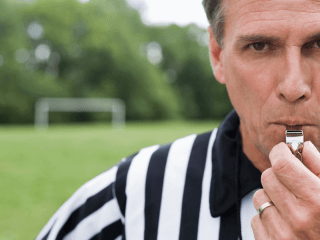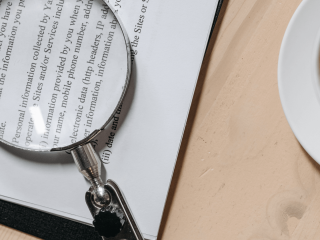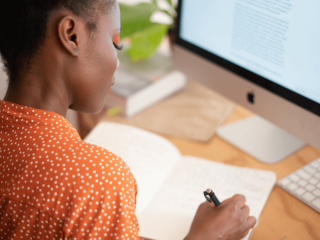Self-Plagiarism: Does It Really Count?
Most people agree that plagiarism is ethically wrong and professionally problematic. Presenting someone else’s work as your own is considered intellectual theft after all. But what about reusing your own prior work? Is it possible to plagiarize yourself?
This article will cover the most common types of plagiarism, which actually do include self-plagiarism, and how they can apply to your own work. You’ll receive tips and tricks to avoid plagiarizing yourself, intentionally or unintentionally.
Quick Refresher: What Is Plagiarism?
In general, plagiarism refers to the act of presenting someone else’s work as your own without giving credit where credit is due. It can occur in almost any setting, including schools, colleges, research institutions, and all kinds of professional spaces. Intentional plagiarism is unethical, and most institutions prohibit plagiarism of any kind, intentional or not.
There are many types of plagiarism, ranging from accidentally over-paraphrasing to blatantly copying an entire completed work. Some common types of plagiarism are:
- Mosaic Plagiarism. Other names for this type of plagiarism include “patchwork plagiarism” and “spun content.” This occurs when you copy a selection of a resource, perhaps replace a few words with synonyms (or not), combine it with another selection from the same or different resource, and present it as original.
- Complete Plagiarism. This type of plagiarism is the most blatant because it involves taking an entire work and presenting it as though it were new and your own.
- Source-Based Plagiarism. This type of plagiarism commonly happens by accident. It occurs when you use multiple research sources but only cite some of them.
- Direct Plagiarism. This is the most commonly used example of plagiarism, where you copy an entire sentence or more from another person’s work without quoting or properly citing it.
- Paraphrasing Plagiarism. This is one of the most challenging forms of plagiarism to detect, but it’s pervasive. It occurs when you rephrase another person’s work or original idea and present it as your own without giving proper attribution to the other work.
- Inaccurate Authorship. This type of plagiarism occurs when you cite a source but name the wrong author or leave off one or more authors of a work with multiple authors.
Each form of plagiarism can occur in education, academia, and professional settings, and many can occur unintentionally. However, even accidental plagiarism can have significant consequences if it’s discovered.
What Is Self-Plagiarism?
As the name suggests, the definition of self-plagiarism is the act of reusing some or all your previous work without disclosing or citing it. Like general plagiarism, it can happen intentionally or unintentionally. Many forms of self-plagiarism are admittedly easy to commit without even realizing it.
Examples of Self-Plagiarism
Pretty much everyone recognizes plagiarism of someone else’s work as a problem, but can you plagiarize yourself? Here are some common examples of self-plagiarism in academics and business.
Academic
Academic self-plagiarism involves reusing your previous academic work without citing it or informing your professors. In some cases, academic self-plagiarism is a violation of an institution’s academic integrity policy. Some examples of academic self-plagiarism are:
- Paraphrasing Plagiarism. Sarah is a university student studying philosophy. In her Introduction to Philosophy course, she wrote a final paper on Rene Descartes. A year later, in a course on Epistemology, she’s assigned a paper on a philosopher of her choice. She paraphrases large sections of the old paper in the new one without informing her Epistemology professor.
- Source-Based Plagiarism. Stevie is a graduate student in psychology writing their final thesis. They referred to a wide range of resources in their academic research, including a paper they had written a couple of years earlier. They leave off their own work in their list of citations, citing other authors’ works instead.
Professional
Professional self-plagiarism occurs when a professional writer reuses their prior pieces in work for other clients. Depending on the situation, this can be a violation of freelance and publishing contracts. Some common examples of professional self-plagiarism are:
- Inaccurate Authorship. Andre is a professional financial copywriter. A financial advisory firm hires Andre to write for them. In his work for that client, he quotes from a paper he wrote with another fellow student in graduate school. To avoid the appearance of bias, Andre only lists the other student’s name when citing the paper, leaving off his own.
- Mosaic Plagiarism. Gabe is a freelance blogger who works with multiple clients in the same industry. A new client asks them to write an article on a topic they’ve written about for another client already. They use bits and pieces of copy from the previous client’s article while writing the new post, swapping out a few words here and there but otherwise copying their earlier work without citing it.
- Complete Plagiarism. Donna is a writer who often submits her work in response to calls for submissions. Two publications she writes for have made similar calls for submissions, and she writes a piece that satisfies both. She submits the piece to both publications but does not disclose that it’s been simultaneously submitted.
Problems with Self-Plagiarism
While self-plagiarism is more of an ethical issue than a legal one, that doesn’t mean the consequences of misrepresenting your own work aren’t serious.
Academic Dishonesty
Committing self-plagiarism may or may not be a violation of your institution’s academic integrity policies. Either way, by recycling your work from one assignment to another, you deprive yourself of the opportunity to learn from the second assignment.
In higher education especially, remember that you are paying for the things you’re learning. If you avoid doing the necessary work, you certainly won’t get the best value out of your investment. Even worse, you could be penalized or punished by your professor or your institution.
Professional Reputation
If you’re a copywriter that writes for a living, text recycling may seem like a way to maximize the value of your time. But presenting your own published work as new will upset both clients if the original work is discovered. No one wants to pay for work you’ve already done for someone else.
Self-plagiarism is especially problematic in scientific and other research fields. Breaking a single larger study into many smaller studies or republishing an old study with minimal new data, for example, detracts from the value of the research as a whole.
Copyright Infringement
Using selections from your own previously published work without proper attribution can put you and your publisher at risk of a copyright infringement claim. While some publishers permit duplicate publication, almost all require that you disclose whether your work has been or will be published elsewhere.
Self-plagiarism in this context can lead to both publishers infringing on each others’ copyright. Copyright law is complicated, and no writer wants to get caught up in a fair use controversy. It’s bad for business, and it’s illegal.
How to Avoid Self-Plagiarism
Self-plagiarism can be difficult to detect, especially if it happens unintentionally. You may not even be aware that you’re recycling or paraphrasing your previously published work, especially if you write on the same topic frequently. Here are some things you can do to avoid any self-plagiarism blunders.
Cite Sources Liberally
The key thing to avoiding plagiarizing yourself or others is to give credit where credit is due. This means citing every single source you use, including secondary sources that you used to locate other sources.
There’s nothing wrong with building on a foundation that someone else built. But you absolutely must disclose to the reader, publisher, or client what that foundation is and who built it first. Citing your sources ensures that you’re not taking credit for someone else’s groundwork.
Disclose Other Publications
If you do quote or take ideas from a previously written or published work, you can disclose it and provide a copy of the prior work to your publisher, editor, professor, or client. Being upfront about using your prior work allows the reader to compare it to your new work.
Disclosure won’t excuse you for overusing text from your previous publications. You must take care to quote only where necessary and try to provide original ideas and writing as much as possible.
Use a Plagiarism Checker
As a final step before submitting your work, you should run it through a plagiarism checker. These tools are often used by editors, publishers, and professors as a matter, of course, to verify that the work they receive is original. By using the same technology yourself, you can verify the originality of your work before they do.
Quetext, an online plagiarism checker, does more than just alert you to potentially plagiarized sentences. If Quetext discovers problematic text selections, it enables you to automatically generate the proper citation on the spot, making it easy for you to give credit to the original author.
Quetext is a great tool for industries where privacy, confidentiality, and security are key. Quetext does not retain any of the text you put through it. You can rest assured that everything you’ve written remains private from unauthorized viewers. On the flip side of this, if your work has been published somewhere on the internet, Quetext will easily identify it, thus specifically preventing self-plagiarism—it’s an excellent accountability tool!
Conclusion
You don’t have to have bad intentions to commit self-plagiarism. It can be fairly easy to do unintentionally, or perhaps without knowing the reality of its nature and the fact that it does indeed count as plagiarism—even if the person you’re plagiarizing is yourself.
By citing every single source you used in your research, you can avoid most instances of plagiarism. An online plagiarism checker like Quetext should be the last step of your proofreading process to avoid accidentally plagiarizing yourself.









